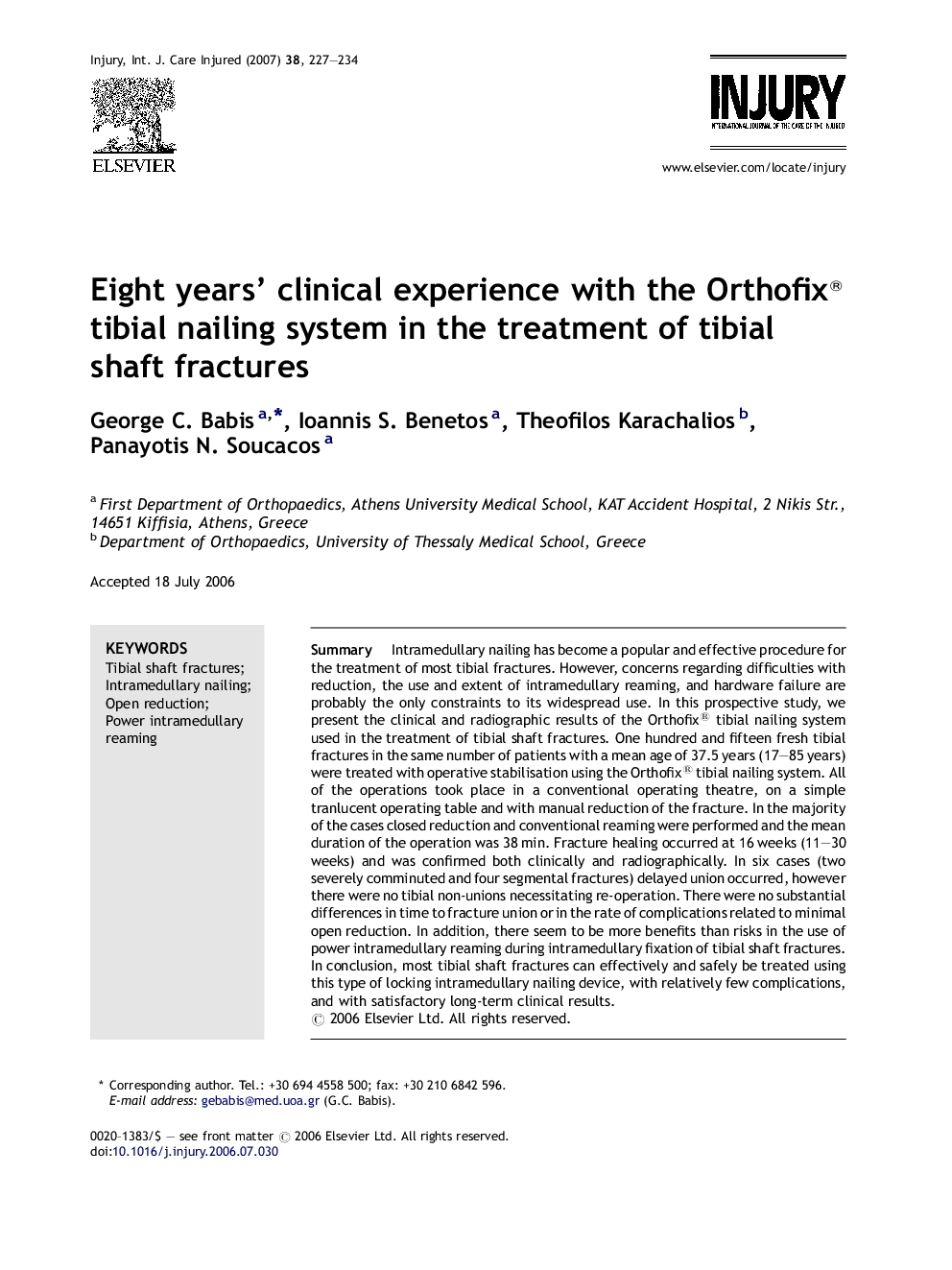| Article ID | Journal | Published Year | Pages | File Type |
|---|---|---|---|---|
| 3242682 | Injury | 2007 | 8 Pages |
SummaryIntramedullary nailing has become a popular and effective procedure for the treatment of most tibial fractures. However, concerns regarding difficulties with reduction, the use and extent of intramedullary reaming, and hardware failure are probably the only constraints to its widespread use. In this prospective study, we present the clinical and radiographic results of the Orthofix® tibial nailing system used in the treatment of tibial shaft fractures. One hundred and fifteen fresh tibial fractures in the same number of patients with a mean age of 37.5 years (17–85 years) were treated with operative stabilisation using the Orthofix® tibial nailing system. All of the operations took place in a conventional operating theatre, on a simple tranlucent operating table and with manual reduction of the fracture. In the majority of the cases closed reduction and conventional reaming were performed and the mean duration of the operation was 38 min. Fracture healing occurred at 16 weeks (11–30 weeks) and was confirmed both clinically and radiographically. In six cases (two severely comminuted and four segmental fractures) delayed union occurred, however there were no tibial non-unions necessitating re-operation. There were no substantial differences in time to fracture union or in the rate of complications related to minimal open reduction. In addition, there seem to be more benefits than risks in the use of power intramedullary reaming during intramedullary fixation of tibial shaft fractures. In conclusion, most tibial shaft fractures can effectively and safely be treated using this type of locking intramedullary nailing device, with relatively few complications, and with satisfactory long-term clinical results.
